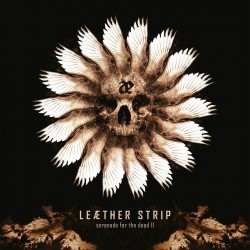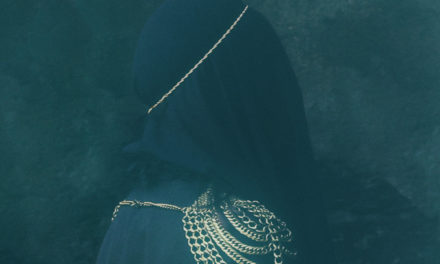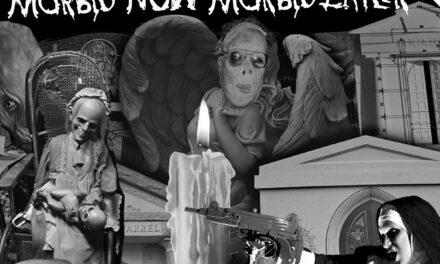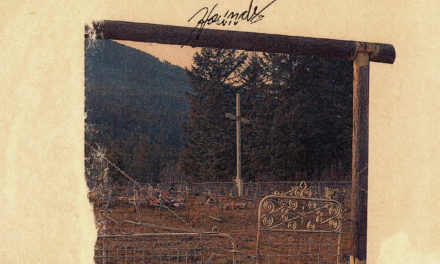Leæther Strip
Serenade for the Dead II
Emmo.biz
We’ve talked a lot about “classic” dark electro here on ID:UD, alternately celebrating and chiding younger bands who’ve embraced that 90s aesthetic, or sometimes reminiscing about original records from Zoth Ommog and other labels of the era. Underlying much of that discussion has been the assumption that there is a commonplace understanding of “the” singular dark electro sound: staccato synth-bass, squelchy leads, dance floor beats, lightly distorted vocals and some horror samples for good measure. What we’ve often forgotten amidst such talk is that there is at least one other dimension which originators like Claus Larsen (and Rudy Ratzinger after him) regularly explored under the rubric of “dark electro”: an evocative, symphonic side which maintained the menace of the genre’s club-friendly mode but chilled its pace down to a languid, nightmarish crawl. Leather Strip’s Serenade for the Dead was one of the first records to be wholly devoted to this sound, and now nearly twenty years later Larsen has returned to that wellspring for inspiration, offering a sequel.
Bereft of vocals save for some unsettling, wordless rhythmic sampling on “Minion On A Tightrope”, Serenade II is high on atmosphere, but also doesn’t mess around. Tracks are constantly evolving and on the move, seguing from one lead to another, reprising earlier themes using new instrumentation, playing station to station as on “Those Who Kill”. Conversely, more contemplative and processional moods, like those exhibited on “Scablands”, are also given space to breathe unafforded to more traditionally arranged dark electro tunes.
What’s perhaps most interesting to me about this flip side of dark electro is how it inverts contemporary questions concerning the genre and gear or software. When we listen to a new record by, say, Necrotek or By Any Means Necessary, we find ourselves debating whether it cleaves close enough to the 90s club stompers it references, make vague suppositions about analogue gear, and attend closely to how “authentic” it sounds; ie, how closely its circumstances of production mirror those of the original models. In the case of symphonic dark electro, such concerns seem immaterial: due to its more ambitious sound, 90s gear almost always sounded like a limitation rather than a charming and nostalgic set of guidelines which informed the sound. In listening to Serenade II, I didn’t find myself wringing my hands over whether DAWs might eclipse the aspects I loved about the original; what endeared the first record to me was the use of composition to elicit mood, and aided by modern tools, Larsen’s imagination has even less limits than before.
None of this is to say that there aren’t some elements of Serenade II which don’t evoke the sound of the original (the sparse, light sawtooth melody of “Spiritual Discipline” feels like a motif right out of a Carpenter film), but these are more often than not blended with modern granularity (the ambient washes at the bottom of “Spiritual Discipline” sound utterly modern). It’s a tasteful mix of elements which feels like it’s allowing Larsen to explore new compositional structures (as on the aforementioned “Minion”, which brings both In Slaughter Natives and Forma Tadre’s minimalist sample-fest Automate to mind) while still bringing the dramatic flourishes which long-time fans no doubt wanted from a record bearing the Serenade tag. Many of our favourite Leæther Strip moments have stemmed from absolute ragers (“Don’t Tame Your Soul” is basically the official ID:UD frontloading anthem), but it’s a treat to hear the flip side of one of Our Thing’s most crucial bands receiving an encore. Set some time aside for it.







Trackbacks/Pingbacks